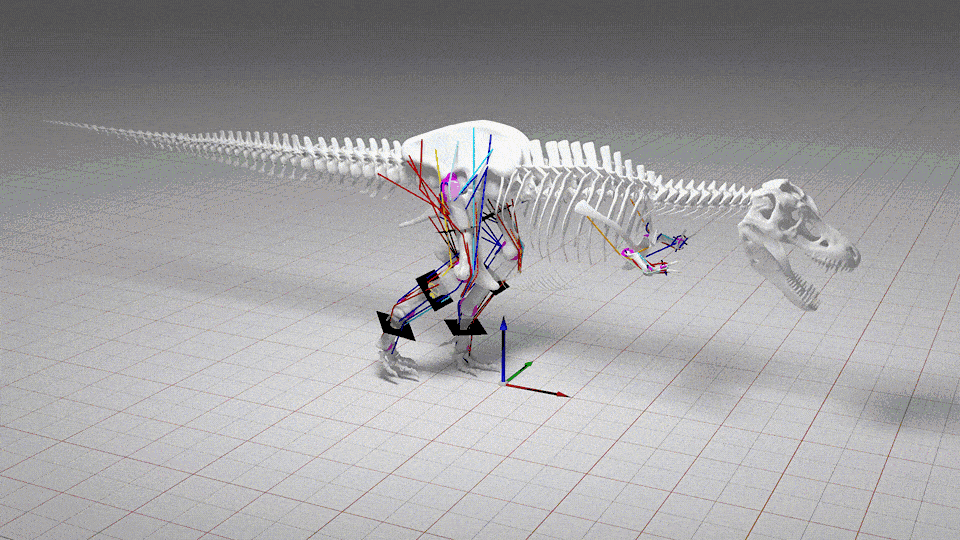When you buy through link on our site , we may realize an affiliate committal . Here ’s how it work .
Paleontologists have uncovered a never - before - seen tyrannosaur metal money in North America that has been masquerading as aTyrannosaurus rexfor decades . The fresh identify mintage is the nearest known relative ofT. rexand could have been even declamatory than the dinosaur king , a new study shows .
The newfound sister coinage , Tyrannosaurus mcraeensis , was identified from a fond fossilized skull that fossilist unearth in 1983 while exploring the Hall Lake Formation in New Mexico . The calcified brainpan was originally classify as aT. rexskull and has been display at the New Mexico Museum of Natural History and Science ( NMMNHS ) ever since . But in 2013 , a squad of paleontologists resolve to reevaluate the skull after noticing subtle yet funny anomalies in its build .

The newfound species, Tyrannosaurus mcraeensis, was around the same size as T. rex and could have been even larger.
In a fresh study published Thursday ( Jan. 11 ) in the journalScientific Reports , the team revealed that the skull dates to between 73 million and 71 million geezerhood ago during theCretaceous period(145 million to 66 million years ago ) . This makesT. mcraeensisbetween 3 million and 5 million years onetime thanT. rex .
The unadulterated age conflict was the main giveaway that they had discovered a new metal money . But there were also major morphological differences that standT. mcraeensisapart from the infamous dinosaur power .
" The most striking departure is the shape of the down in the mouth jaw , which is more svelte and curved [ thanT.rex ] , " study co - authorNick Longrich , a paleontologist at the University of Bath in the U.K. , told Live Science . " It also miss the prominent bosses or hornlets found over the top of the eye inT. rex . "

The newly identified species is the closest known relative ofT. rex, researchers claim.
T. mcraeensisalso has fewer teeth than most other Tyrannosaurus rex , which is one of the master reasons why the researchers trust it isT. rex ’s closest relation — becauseT. rexalso has fewer teeth , Longrich say .
Related : Nanotyrannus vs. T. rex saga continues : Controversial study ' does n’t patch up the question at all '
The size of the skull propose this particularT. mcraeensiswas around the same sizing as a typical adultT. male monarch , which grew to around 39 feet ( 12 meters ) long — around the same size as a double - decker bus . But other individuals of the same species may have been even larger .

T. mcraensiswould have roamed Laramidia, an ancient landmass that covered the West Coast of what is now North America.
" It ’s not impossible " thatT. mcraeensiscould have been even larger thanT. rex , Longrich aver . " Since we only have one individual , it ’s unlikely we ’ve found the giving individuals of the specie . "
T. mcraeensiswas probable the apex predatory animal of its meter , just likeT. rex , Longrich said . And if the pair had be at the same clock time , they would have " plausibly been pretty evenly match " in a fight , he added .
T. rex and most other tyrannosaur live on exclusively on an ancient landmass known as Laramidia , which was made up of what is now the western seacoast of North America from Alaska down to Mexico .

Until now , T. rex ’s closest relatives were a pair of tyrannosaurs namedTarbosaurus bataarandZhuchengtyrannus magnus , which are found in modern - dayChinaand Mongolia . Both specie dated back further thanT. rex , which indicate tyrannosaurs may havefirst emerged in what is now Asia , although this has never been sustain .
The newfangled findings suggest that Laramidia is a more likely origin of the tyrannosaur filiation , which would inculpate that these dinosaurs later spread to Asia . However , there is still uncertainty around this .
— ' horrifying ' never - before - seen Tyrannosaurus rex might be the ' missing connexion ' in T. king evolution

— Teenage tyrannosaurs gorged on dino ' drumsticks , ' 1st - of - their - kind fossils show
— Massive bulldog - present dinosaur was like a T. rex on steroid hormone
Laramidia was home to a full potpourri of dinosaur species , including several other late uncovering , such asSierraceratops turneri — a tusk herbivore similar toTriceratopsthat was described in a2022 paperand was also previously misidentified as a unlike dinosaur species .

The new finding are further evidence that New Mexico is one of the good places in the Earth to search for new dinosaur species , study co - authorSpencer Lucas , the conservator of geology and paleontology at NMMNHS , said in a statement sent to last Science . " Many raw dinosaurs remain to be discovered in the state , both in the rocks and in museum bloomers , " he added .














